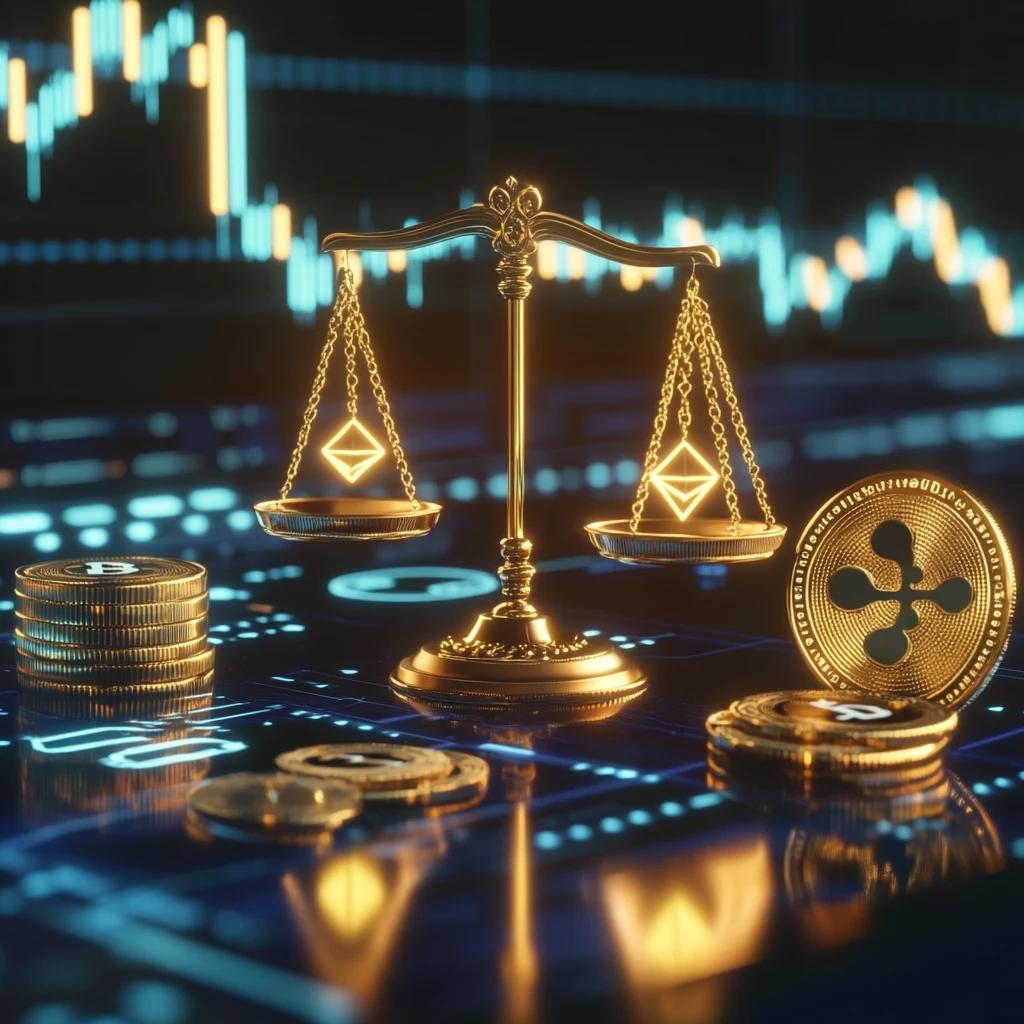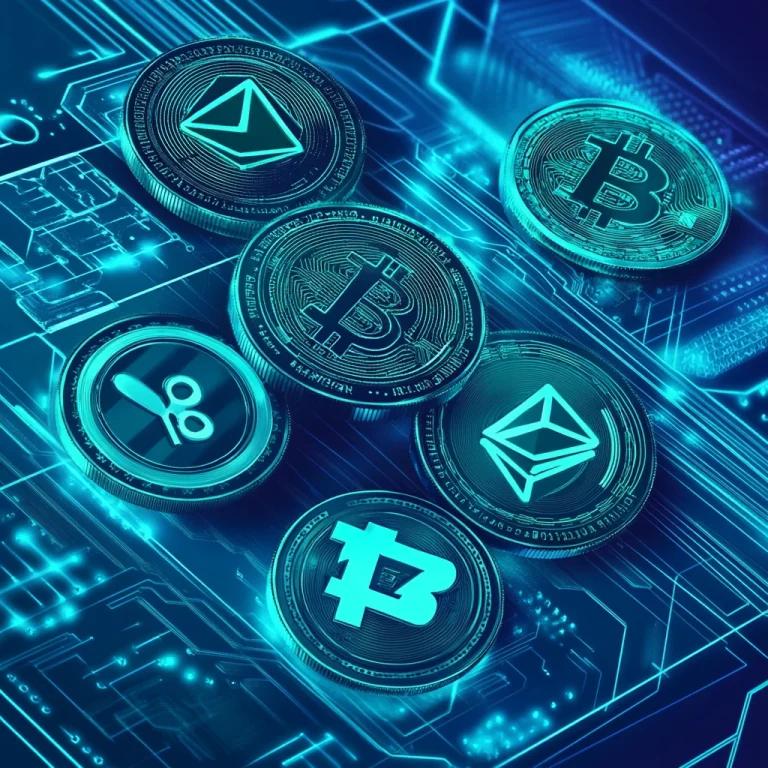What Are Stablecoins and How To Invest In Them?
Stablecoins as investment comes in when the market trends get out of hand. Learn how they bring stability amidst the crypto chaos.

Stablecoins come as a contradiction in the chaotic world of cryptocurrencies. These cryptocurrencies have their values attached to a stable asset like fiat currencies or other stable cryptocurrencies to maintain their price over a longer period of time.
But crypto investors are more into the chaos than stability. Hence, the picture of stablecoins as investment comes in when the market trends get out of hand. This is when these tokens arrive as a savior, providing a cushion against volatility.
Today we’ll discuss all about stablecoin investment opportunities and how to invest in these low volatility assets.
How do Stablecoins Work?

Source : blockchainsimplified
Stablecoins function through various mechanisms that give them this unique demeanor. At the heart of these mechanisms is pegging. As the name suggests, pegging is how stablecoins attach their values to stable assets.
You can see this from the image above how stablecoins associate their values with four different asset classes. To use stablecoins as investment you must first understand the different pegging mechanisms.
This can help you navigate risks in your investment journey as well as provide an opening to participate in the different DeFi applications.
Fiat-Collateralization
These crypto tokens are backed by traditional money like the US Dollar or Euro at a 1:1 ratio. This means for every stablecoin created, there is an equal amount of fiat currency held in reserve. Tokens such as the are USDC and Tether (USDT) function within the fiat collateralization mechanism.
Crypto-Collateralization
These cryptocurrencies are backed by other major crypto assets, like Ethereum. These cryptos, such as DAI, are over-collateralized to help protect against price changes in the backing cryptocurrency.
Commodity-Collateralization
These stablecoins maintain their value by pegging themselves to physical commodities, like gold or silver. Their value fluctuates based on the price of the underlying commodity such as PAX Gold (PAXG), Tether Gold (XAUT), and Digix Gold (DGX).
Algorithmically Controlled
Stablecoins that use algorithms do not rely on reserves. Instead, they use algorithms and smart contracts to automatically change the amount of the stablecoin in circulation. This aims to keep its price steady. The first coin to showcase this nature was Ampleforth (AMPL).
Stablecoins as Investment: How to Do It?
Before getting into the steps, let’s first talk about cryptocurrency investment strategy that begins with the right coin choice.
Just like everything else in this world, this too beings at research. The more you learn about the assets, the better you align them with your investment goals.
Nevertheless, popularity and hype never go out of fashion in the crypto world. Hence, you can always go for the well-known faces like Tether (USDT), USD Coin (USDC), and DAI when looking for reputable stablecoins as investment.
Then again, stablecoins don’t generate the same hype as other cryptocurrencies. But if you’re someone whose day begins with a crypto price chart instead of a newspaper, you know which ones are ranked high by market cap. For others, here’s a peek into those names and their values:
- USDT ($116 billion)
- USDC ($35 billion)
- DAI ($5 billion)
On the other hand, if you’re looking at algorithmic stablecoins like TerraUSD, know that it’s past its prime. Infact, TerraUSD lost its dollar peg in May 2022 due to market declines and loss of confidence.
Once you’ve figured your stablecoin blockchain investment options, it’s time to know the steps:
Populate your Wallet
You can fund your exchange account using any transfer option including bank transfers, credit/debit cards, or cryptocurrency deposits. Choose the most convenient option and follow the exchange’s instructions while doing it. If you care about your money, check for any fees and processing times before transferring funds.
Buy It!
Buying stablecoins is easy. Log in to your exchange, select the stablecoin you want, enter the amount, review the order, and confirm the transaction! As the drill goes, the stablecoins will reflect on your account.
One thing to note here is that for market orders you can buy at the current price, while limit orders let you set your purchase price.
Once you have them, store your stablecoins safely in a wallet of your choice.
Stablecoin Investment Risk
Nothing in crypto land goes without risks. Not even stablecoins.
When you go for stablecoins as investment, the risk primarily relies on the value of the assets they are pegged to. If these assets decline in value, the stability of stablecoin is automatically compromised.
Moreover, stablecoins come with some degree of risks related to transparency and regulation of issuers. Also, security vulnerabilities with storage, counterparty risk due to reliance on multiple parties, reserve risk if backing reserves are insufficient, and lack of confidence if not adequately supported by hard assets never go away with any investment.
As we mentioned above, the algorithmic stablecoin TerraUSD lost its peg in May 2022 because it wasn’t sufficiently backed by cash.
Know When Your Stablecoin Investment Is Safe
To check if a stablecoin is safe, the best way is to review the issuer’s reserve reports. In this case, lack of transparency is a red flag.
Tether, a prominent stablecoin, has faced scrutiny over its reserve disclosures, revealing that a significant portion of its assets consists of non-cash investments like short-term corporate debt, corporate bonds, and secured loans.
While most stablecoins have improved their reserves to compete with the market by holding a higher percentage in cash equivalents, volatility still remains a concern when they are pegged to Bitcoin and precious metals.
At the end, the stability of any currency, including stablecoins, relies on widespread acceptance, and in the U.S., that remains the dollar.
Follow us on Google News
Get the latest crypto insights and updates.


